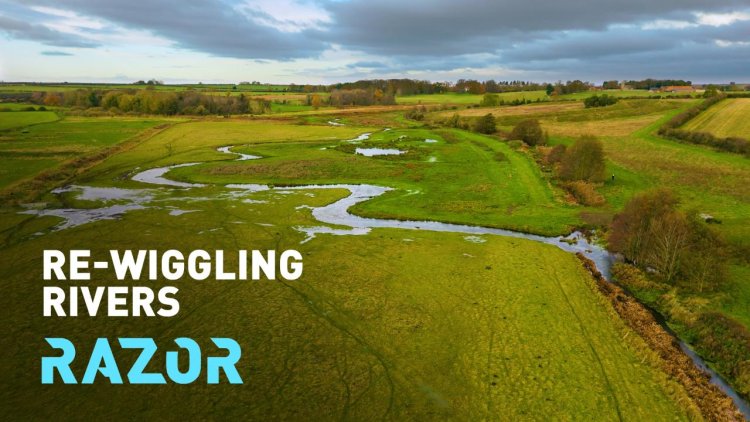RAZOR: Restoring the Natural Curves to River Paths
Initiatives aimed at returning rivers to their natural flow in the UK are demonstrating that humans and the natural environment can coexist harmoniously.

Pollution, waste, sewage, agricultural runoff, and drought are placing immense pressure on freshwater ecosystems. Currently, only 14% of river catchments in England are in good ecological condition.
Human activity over the decades—often conducted in the name of progress—has greatly impacted these waterways. Many rivers around the globe have been straightened and severed from their natural floodplains, primarily to accommodate farming and development. However, rivers are not designed to be straight.
They are intended to meander.
Meandering rivers naturally help to purify water, mitigate flooding, and sustain diverse plant and animal life. This is why a movement called "re-wiggling" is gaining traction in the UK, aiming to restore the curves and character of rivers that have been lost.
READ MORE FROM RAZOR
A wind power tower made from wood
A new era of lunar exploration
A doomsday vault situated in the Arctic
RAZOR's Gabrielle Lawrence traveled to Norfolk, England, to observe the impact of a re-wiggling project and its role in revitalizing a river.
The River Stiffkey is a 29-kilometer chalk stream that winds its way from the countryside to the sea. Like many other rivers, it was straightened years ago for land reclamation for housing and agriculture. Subsequently, pollution from wastewater, intensive farming, and septic systems began to undermine its fragile ecosystem.
In response, the Norfolk Rivers Trust, aided by hundreds of local volunteers, launched a significant restoration initiative. They reconnected a two-kilometer stretch of the river to its floodplain and utilized diggers to recreate its natural curves.
The results have been astonishing.
Egrets, otters, and kingfishers have made a comeback. The water quality has improved. Biodiversity is on the rise.
Across the nation, similar re-wiggling projects are demonstrating that it is indeed possible for humans and nature to coexist harmoniously. By allowing rivers to expand and curve, we are rekindling our understanding of their essential role—not only for wildlife but for humanity as well.
Navid Kalantari contributed to this article for TROIB News
Discover more Science and Technology news updates in TROIB Sci-Tech












